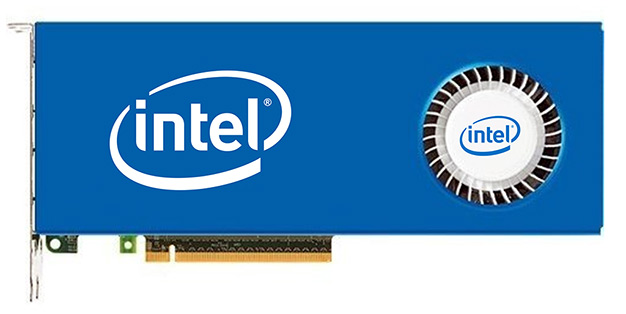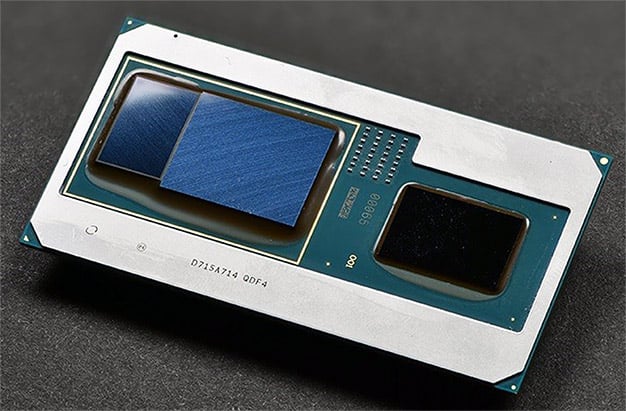Intel Exec Discloses Discrete GPU Details And Strategy
Intel Answers GPU Questions - What's Their Strategy?

If you’re relatively new to the PC graphics scene, you may be unaware that Intel has tried this before. In 2010, the company cancelled plans to introduce its Larrabee GPU architecture to the consumer market. Larrabee was first and foremost a GPGPU-centric architecture, however, and ultimately didn’t fit in the 3D consumer space. Looking even further back to the late '90s, Intel had some success with the i740 graphics processor, but that too eventually fell victim to competing solutions from NVIDIA, 3dfx, ATI, and Matrox at the time. We asked Ari if this latest GPU effort, which was hatched about three years ago, was just a rehash of Larrabee and were told that the design philosophy is completely different. Although compute performance is not an afterthought, 3D graphics is of paramount importance with this upcoming Intel GPU architecture, and that the company's products would not lag behind competing solutions with respect to mainstream GPU features this time around.
Intel's Discrete Graphics Architecture Strategy
Lest we forget, Intel is not new to graphics. Intel GPU cores, integrated into its desktop and mobile processors, push the pixels in hundreds of millions of systems. And the company has a low-power DirectX 12-class GPU already in its repertoire. Theoretically, if Intel wanted, it could simply scale up its current GPU architecture and make more powerful discrete GPUs. This is not what Intel will be doing, however. In our discussion with Ari, he specifically stated that the GPU coming in 2020 is a massive enhancement to Intel’s graphics IP, optimized for future graphics, compute, and machine learning workloads. When highly constrained by performance per watt, like Intel’s on-processor graphics are, architectural decisions are made that wouldn’t necessarily apply to discrete solutions.In addition to grilling Ari for any hardware and architectural details he could disclose, of which there weren’t many at this time, we also talked at a higher level about the impression Intel would like to make on consumers when its discrete GPUs eventually arrive. Ari said it was Intel’s intention to offer a number of unique features meant to enhance the end user experience and drive totally new experiences as well. Exactly what that means remains to be seen, but It does not seem that Intel’s intention is to release a me-too GPU that simply competes on performance at a given price point. Intel plans to differentiate somehow and potentially offer things that NVIDIA and AMD currently don’t.
Intel's Discrete Graphics Software Strategy
Intel’s software suite will obviously play a big role in its upcoming discrete GPU efforts as well. Part of our discussion centered around a plan to use telemetry and machine learning, on a per-system and per-user basis, to suggest the best settings possible for a particular game title. A lot of work has to be done for Intel to realize its vision, but Ari seemed confident and pointed out that Intel has already made significant strides in overall compatibility and with Day 0 driver support for some of the latest games. We should also mention that Ari underscored that Linux gaming will be a focus for Intel as well.We couldn’t pin down Ari on a specific performance target for Intel’s initial discrete GPU offering, unfortunately. Ari did say, however, that over time, if all goes to plan, Intel will target all market segments with scalable, tailored discrete GPU solutions for mainstream consumers, graphics professionals, and the data center market. The early phases will be about building momentum, which probably means Intel will be targeting the sub-$300 sweet spot of the market initially, but we are speculating at this point. “This will be a marathon, not a sprint” according to Ari.
A Community Q&A Session With Intel Visual Technologies
Intel also informed us on its intention to engage with gamers and enthusiasts, which is part of the reason this article came to be. In addition to our private chat, we enlisted the help of readers interested in asking Intel questions about its upcoming GPU plans. We compiled a list of those questions over the last few days that Ari and his team have since answered...What is it about the current GPU market that made Intel believe now was a good time to dive in with a fresh, discrete GPU design effort?
Moore’s law was always about scaling the user experience and being able to continue delivering on that promise. As we head in to 2019, we’re continuing to scale our graphics. Today, Intel graphics processors are lighting up billions of screens across the planet, and we are laser-focused on providing the best experiences like adaptive sync and launch day drivers, and we’re working hard on new advancements in user interfaces. We believe we’re ready to scale the experience even further with discrete graphics, which will see first availability by 2020.

Years Ago, Partners Like Diamond And 3DLabs Sold Intel i740 Based Video Cards
What will be Intel’s GPU distribution model? Will you be selling GPUs both directly and with OEM partners, like NVIDIA does with its Founder’s Edition cards, or will you engage only with partners or only direct?
Intel works with an incredibly large and diverse channel ecosystem and our decisions will be centered around bringing great products and solutions to market quickly that focus on the overall experience in unique form factors.
What market segment will Intel initially target? High-end? Mid-range? Low-end? All three? Will desktop computing and gaming be Intel’s initial target or will you be going after the data center first, or both?
Last November, we said we’ll bring discrete GPUs to both client and data center segments aiming at delivering the best quality and experiences across the board including gaming, content creation, and enterprise. These products will see first availability over a period of time, beginning in 2020. You’ll hear plenty of rumors about our product release cadence for discrete graphics -- ignore the speculation and wait until you hear it from us!

Intel Kaby Lake G With On-Package, Discrete Radeon RX Vega GPU
For clarity, can Intel confirm that its first discrete GPUs will be add-in boards and not discrete GPUs attached to a CPU on a single-package via EMIB, like Kaby Lake G?
We will keep this as a surprise for now.
Intel has stated that 2020 is the current target for its discrete GPU – does that mean the early or late part of 2020?
We’ve said availability of our first discrete graphics will be in 2020, we will share more on timing at a later stage.
There are currently supply constraints with Intel processors built on the 14nm node and the delays associated with 10nm are well known at this point. Are you confident Intel can build enough GPUs on a node advanced enough to keep pace with competing discrete GPU solutions that will likely be manufactured at 7nm by the time you’re ready to launch?
We feel very confident about our product roadmap across software, architecture, and manufacturing.
How far along in the process are you? Does Intel already have silicon back from the fab or are you still in the simulation phase?
We’re on track for availability in 2020 and there’s a lot of work happening now.
How will this new discrete GPU strategy differ from Larrabee?
One way to think about this is our current Gen 9 GPUs in the market today are significantly different from Larrabee. Our incredibly accomplished team is now working on a new architecture for GPUs.
Do you have any branding ideas or information to share just yet?
We are considering many options now and would love to hear from the community. Tell us what you think! We don’t want to do this alone. We’ll be reaching out to the communities in the coming months to hear what you think about things like branding.
Will Intel’s discrete GPUs add any new multi-media capabilities for gamer streamers and content creators?
Media and display has always been one of our strongest graphics portfolios. We were first to market with Netflix in 4k, have incredible low power transcode abilities, and work extensively with the top media editing companies. We’ll absolutely have some great stuff in there and we can’t wait to bring new capabilities to streamers and content creators.
Is Intel targeting to be both a cost and performance leader in GPUs initially, or is top performance, or best performance-per-dollar the first goal out of the gate?
We’re listening to customers and want to deliver the best experiences we can based on what they tell us. It’s not just about pricing and framerates – it’s about things like great technology, driver quality and features. We want to look at every dimension that is important to a user when it comes to graphics.
A few Intel Discrete Graphics Hardware And Software disclosures are next...








